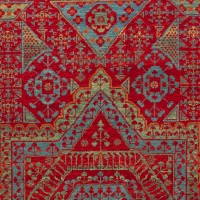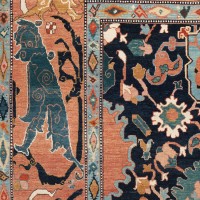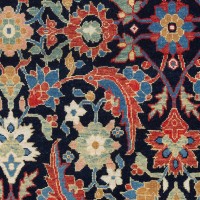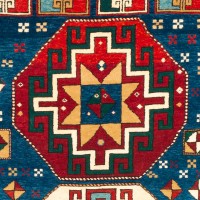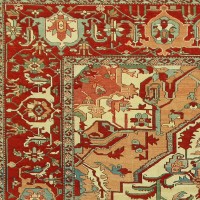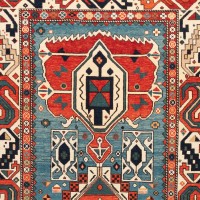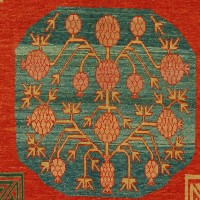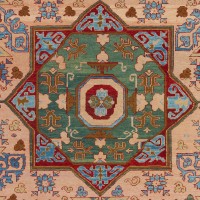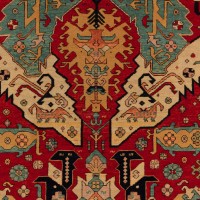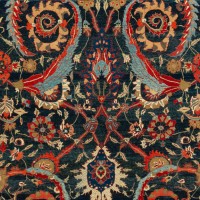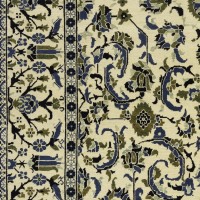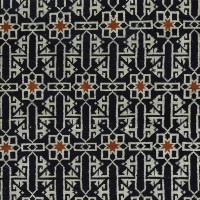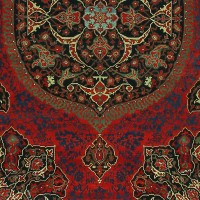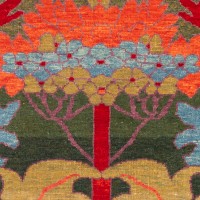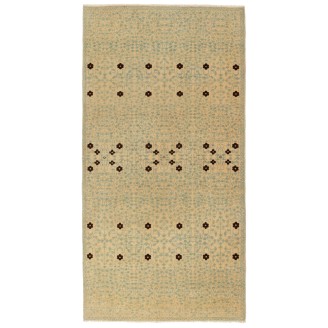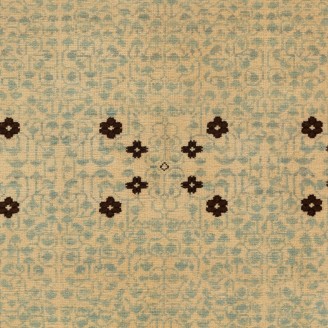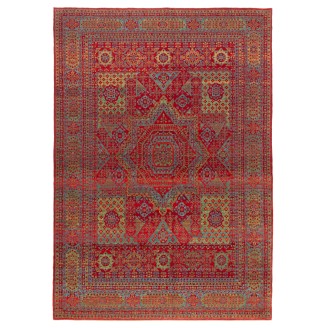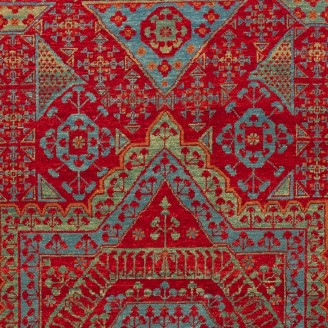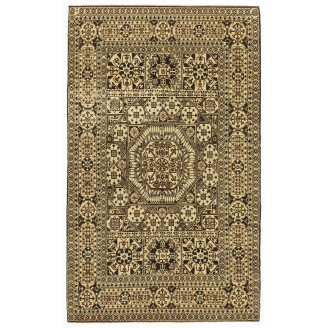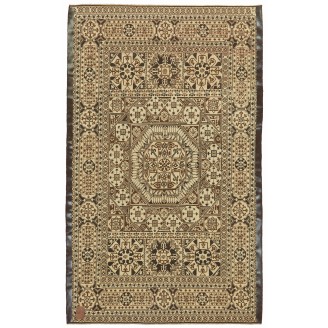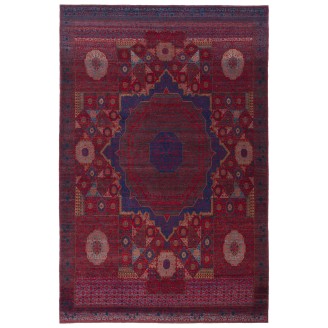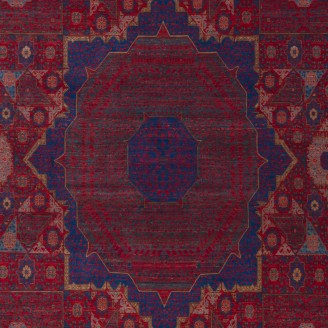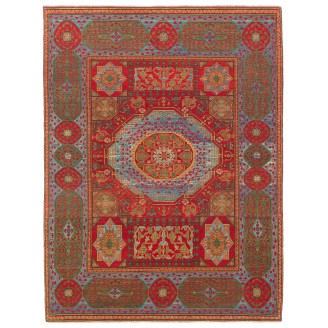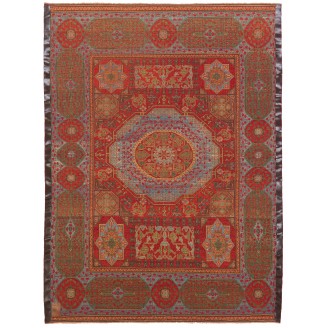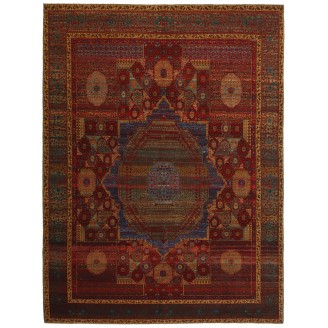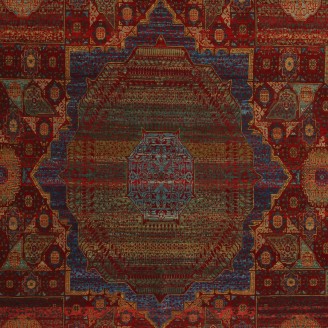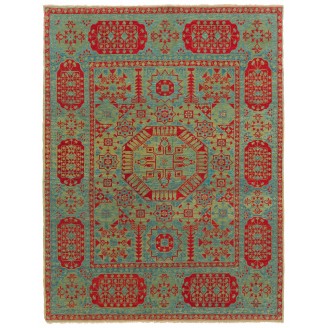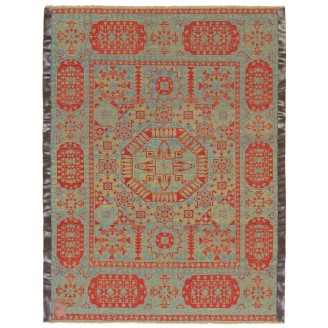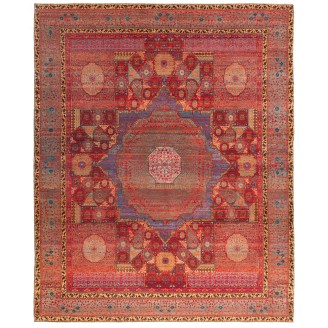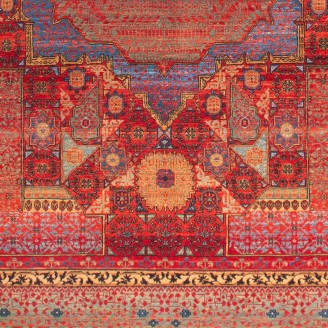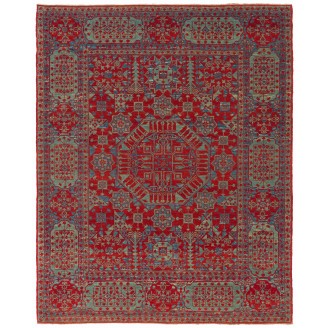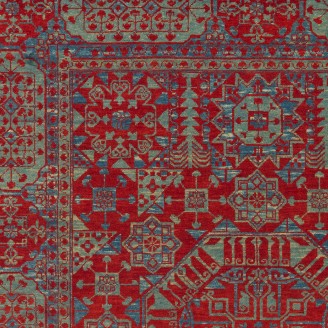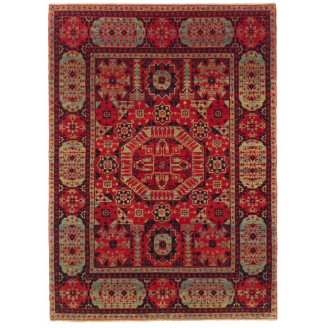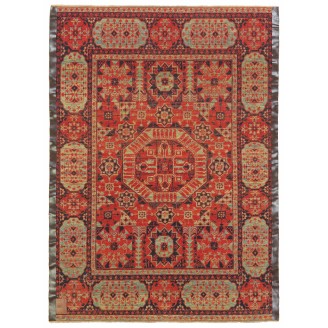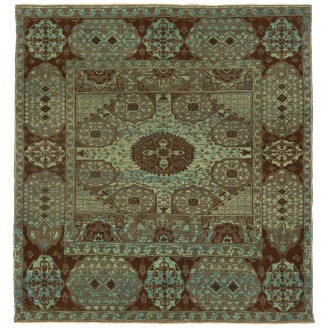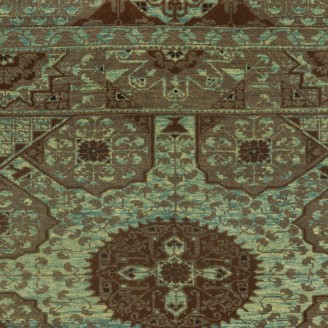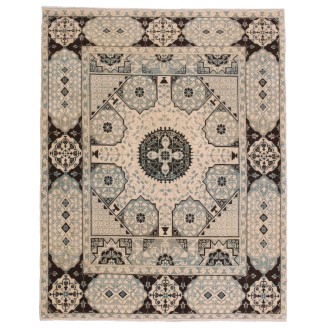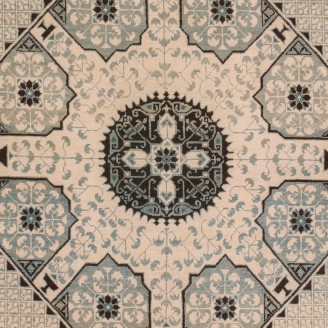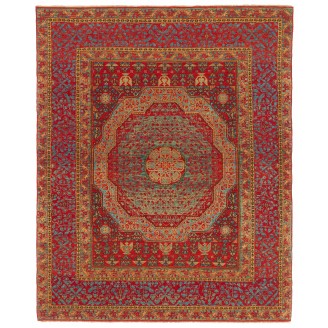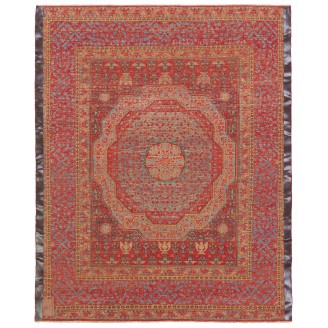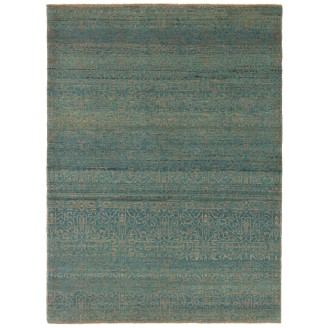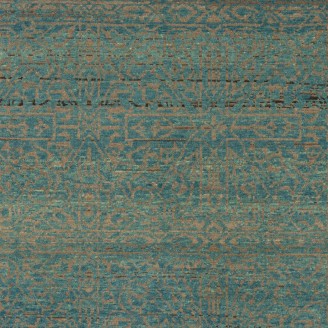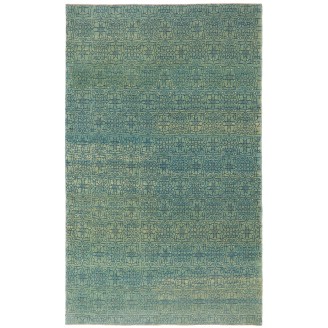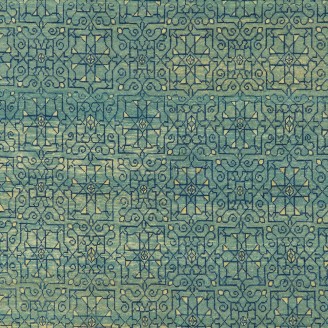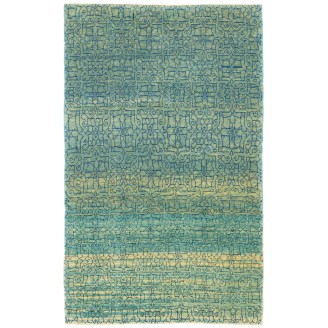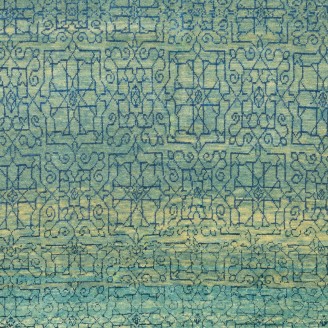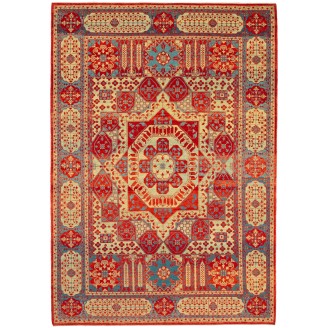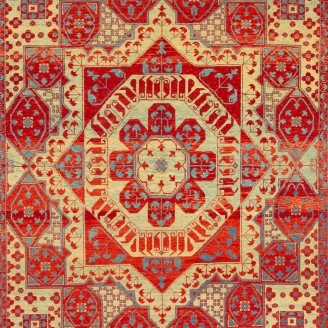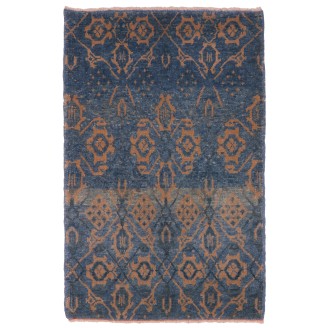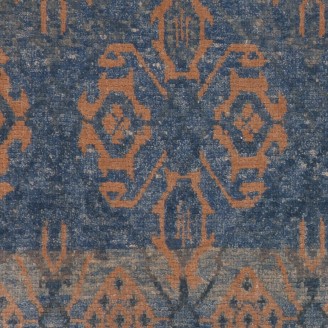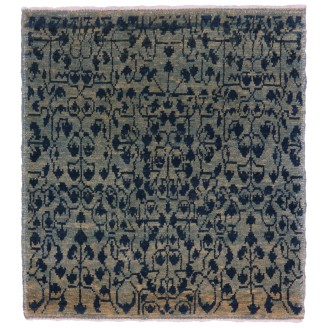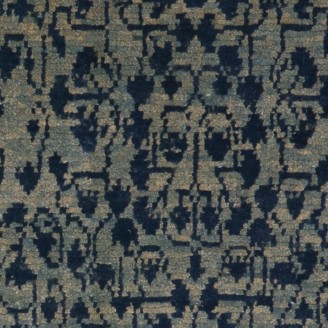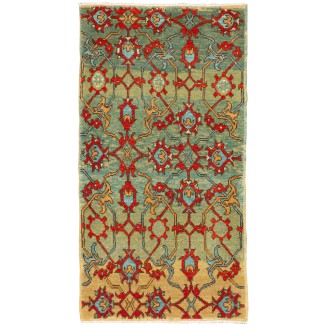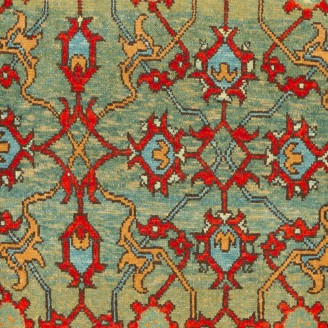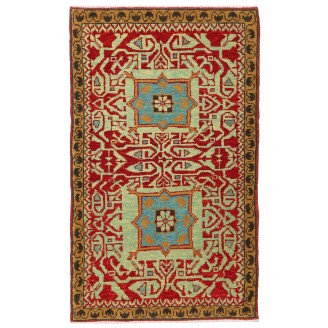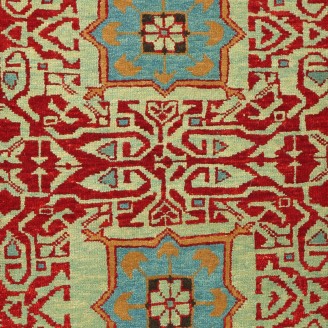Model: ART00273
Dimensions: 2'10" X 5'5"(87cm x 167cm)
The source of carpet comes from the book Völker, Angela, Die orientalischen Knüpfteppiche das MAK, Vienna: Böhlau, 2001: 42–5. That rug with the central star was designed in the early 16th-century rug by Mamluk Sultane of Cairo, Egypt. It is exhibited at MAK – Museum of Applied Arts, Vienna Austria...
Price:
$2,500
Ex Tax:$2,500
Model: ART00028
Dimensions: 6'7" X 9'3"(202cm x 284cm)
The source of the rug comes from the Textile Museum, Washington D.C. inv. R 16.2.4. This rug with the central star was designed in the early 16th-century rug by Mamluk Sultane of Cairo, Egypt. Acquired by Mr.Myers at the 1926 Benguiat Sale("a Damascus Gothic Carpet") and exhibited at the 1947 Chicag..
Price:
$16,300
Ex Tax:$16,300
Model: ART00728
Dimensions: 7'6" X 4'7"(229cm x 140cm)
This rug with the central star was designed in the early 16th-century rug by Mamluk Sultane of Cairo, Egypt. Attempting to read early carpets produced in workshops in Cairo provides an entirely different set of challenges. Cairene carpets, distinguished by their limited color palette, symmetrical kn..
Price:
$6,412
Ex Tax:$6,412
Model: ART00013
Dimensions: 8'9" X 13'6"(268cm x 413cm)
The source of the rug comes from the book Völker, Angela, Die orientalischen Knüpfteppiche das MAK, Vienna: Böhlau, 2001: 42–5. This rug with the central star was designed in the early 16th-century rug by Mamluk Sultane of Cairo, Egypt. It is exhibited at MAK – Museum of Applied Arts, Vienna Austria..
Price:
$29,000
Ex Tax:$29,000
Model: ART00699
Dimensions: 5'2" X 6'11"(160cm x 213cm)
Introducing the exquisite Mamluk Rug with Central Star (Model: ART00699) from Ararat Rugs, a masterpiece that embodies the rich heritage of Mamlouk artistry. Handcrafted with meticulous attention to detail, this rug showcases the distinctive geometric patterns and vibrant colors characteri..
Price:
$6,800
Ex Tax:$6,800
Model: ART00014
Dimensions: 7'10" X 10'4"(239cm x 315cm)
The source of the rug comes from the book Völker, Angela, Die orientalischen Knüpfteppiche das MAK, Vienna: Böhlau, 2001: 42–5. This rug with the central star was designed in the early 16th-century rug by Mamluk Sultane of Cairo, Egypt. It is exhibited at MAK – Museum of Applied Arts, Vienna Austria..
Price:
$16,500
Ex Tax:$16,500
Model: ART00701
Dimensions: 4'3" X 5'6"(132cm x 170cm)
Introducing the exquisite Mamluk Rug with Central Star (Model: ART00701) from Ararat Rugs, a masterpiece that embodies the rich heritage of Mamlouk artistry. Handcrafted with meticulous attention to detail, this rug showcases the distinctive geometric patterns and vibrant colors characteri..
Price:
$4,200
Ex Tax:$4,200
Model: ART00037
Dimensions: 8'1" X 9'10"(248cm x 302cm)
The source of the rug comes from the book Völker, Angela, Die orientalischen Knüpfteppiche das MAK, Vienna: Böhlau, 2001: 42–5. This rug with the central star was designed in the early 16th-century rug by Mamluk Sultane of Cairo, Egypt. It is exhibited at MAK – Museum of Applied Arts, Vienna Austria..
Price:
$22,500
Ex Tax:$22,500
Model: ART00625
Dimensions: 5'4" X 4'4"(164cm x 133cm)
This rug with the central star was designed in the early 16th-century rug by Mamluk Sultane of Cairo, Egypt. Attempting to read early carpets produced in workshops in Cairo provides an entirely different set of challenges. Cairene carpets, distinguished by their limited color palette, symmetrical kn..
Price:
$4,350
Ex Tax:$4,350
Model: ART00731
Dimensions: 4'4" X 6'0"(134cm x 185cm)
Introducing the exquisite Mamluk Rug with Central Star (Model: ART00731) from Ararat Rugs, a masterpiece that embodies the rich heritage of Mamlouk artistry. Handcrafted with meticulous attention to detail, this rug showcases the distinctive geometric patterns and vibrant colors characteri..
Price:
$4,600
Ex Tax:$4,600
Model: ART00331
Dimensions: 4'10" X 5'1"(148cm x 157cm)
The source of the rug comes from the book Renaissance of Islam, Art of the Mamluks, Esin Atil, Smithsonian Institution Press, Washington D.C., 1981 nr.125. This a rug with a cup motif design late 15th-century rug from Mamluk Sultane of Cairo, Egypt. It is exhibited at the Washington D.C. The Textile..
Price:
$3,800
Ex Tax:$3,800
Model: ART00285
Dimensions: 4'9" X 6'0"(147cm x 185cm)
The source of the rug comes from the book Renaissance of Islam, Art of the Mamluks, Esin Atil, Smithsonian Institution Press, Washington D.C., 1981 nr.125. This a rug with a cup motif design, a late 15th-century rug from Mamluk Sultane of Cairo, Egypt. It is exhibited at the Washington D.C. The Text..
Price:
$4,700
Ex Tax:$4,700
Model: ART00742
Dimensions: 4'8" X 5'8"(143cm x 173cm)
Introducing the exquisite Mamluk Rug with Cusped Medallion (Model: ART00742) from Ararat Rugs, a masterpiece that embodies the rich heritage of Mamluk artistry. Handcrafted with meticulous attention to detail, this rug showcases the distinctive geometric patterns and vibrant colors charact..
Price:
$4,600
Ex Tax:$4,600
Model: ART00582
Dimensions: 4'9" X 6'4"(145cm x 194cm)
This rug has an interpreted design composed of a geometric lattice pattern taken from a part of the Mamluk rug, filling the field elegantly, has the impression that it is only part of a larger scheme designed 15th-century rug from the Mamluk era, Cairo region, Eygpt. Mamluk carpets originated in a p..
Price:
$4,520
Ex Tax:$4,520
Model: ART00590
Dimensions: 5'9" X 9'4"(176cm x 285cm)
The source of the rug comes from the possession of Endre Unger, which was sold at Sotheby’s in 1992. That rug with the central star was designed in the early 16th-century rug by Mamluk Sultane of Cairo, Egypt. The interpreted design is composed of Jerrehian rug's border motifs lattice, covering..
Price:
$8,730
Ex Tax:$8,730
Model: ART00282
Dimensions: 3'4" X 5'5"(104cm x 166cm)
The source of the rug comes from the possession of Endre Unger, which was sold at Sotheby’s in 1992. That rug with the central star was designed in the early 16th-century rug by Mamluk Sultane of Cairo, Egypt. The interpreted design is composed of Jerrehian rug's border motifs lattice, covering the ..
Price:
$2,900
Ex Tax:$2,900
Model: ART00201
Dimensions: 6'9" X 9'6"(206cm x 290cm)
The source of the rug comes from the book Renaissance of Islam, Art of the Mamluks, Esin Atil, Smithsonian Institution Press, Washington D.C., 1981 nr.126. This rug with palm trees and cypresses was designed in the late 15th-century rug by Mamluk Sultane of Cairo, Egypt. It is exhibited at the Washi..
Price:
$14,000
Ex Tax:$14,000
Model: ART00061
Dimensions: 1'8" X 2'7"(51cm x 79cm)
This lattice pattern is composed of palmettes and leaves filling the various compartments against the imposing ground. One has the impression that it is only part of a larger scheme designed 15th-century rug from the Mamluk era, Cairo region, Eygpt. These designs have often been described as wagireh..
Price:
$825
Ex Tax:$825
Model: ART00468
Dimensions: 1'8" X 1'9"(51cm x 55cm)
The source of carpet comes from the book Völker, Angela, Die orientalischen Knüpfteppiche das MAK, Vienna: Böhlau, 2001: 42–5. That rug with the central star was designed in the early 16th-century rug by Mamluk Sultane of Cairo, Egypt. It is exhibited at MAK – Museum of Applied Arts, Vienna Austria...
Price:
$400
Ex Tax:$400
Model: ART00176
Dimensions: 1'7" X 3'1"(50cm x 95cm)
This rug has an interpreted design composed of a palmette lattice pattern taken from a part of the Mamluk rug, filling the field elegantly. These kinds of rugs have often been described as wagirehs or samplers and were said to have been used as weaver`s aids, or for demonstration purposes, made as a..
Price:
$825
Ex Tax:$825
Model: ART00168
Dimensions: 1'8" X 2'8"(51cm x 83cm)
The source of the rug comes from the Baillet-Latour Mamluk Carpet, Vienna Book(1892) and Sarre-Trenkwald(1926, pl.48). That carpet was designed in the early 16th-century rug by Mamluk Sultane of Cairo, Egypt. It was sold at Christie's London on 8 April 2014 and purchased by the Louvre Museum. It is ..
Price:
$825
Ex Tax:$825
